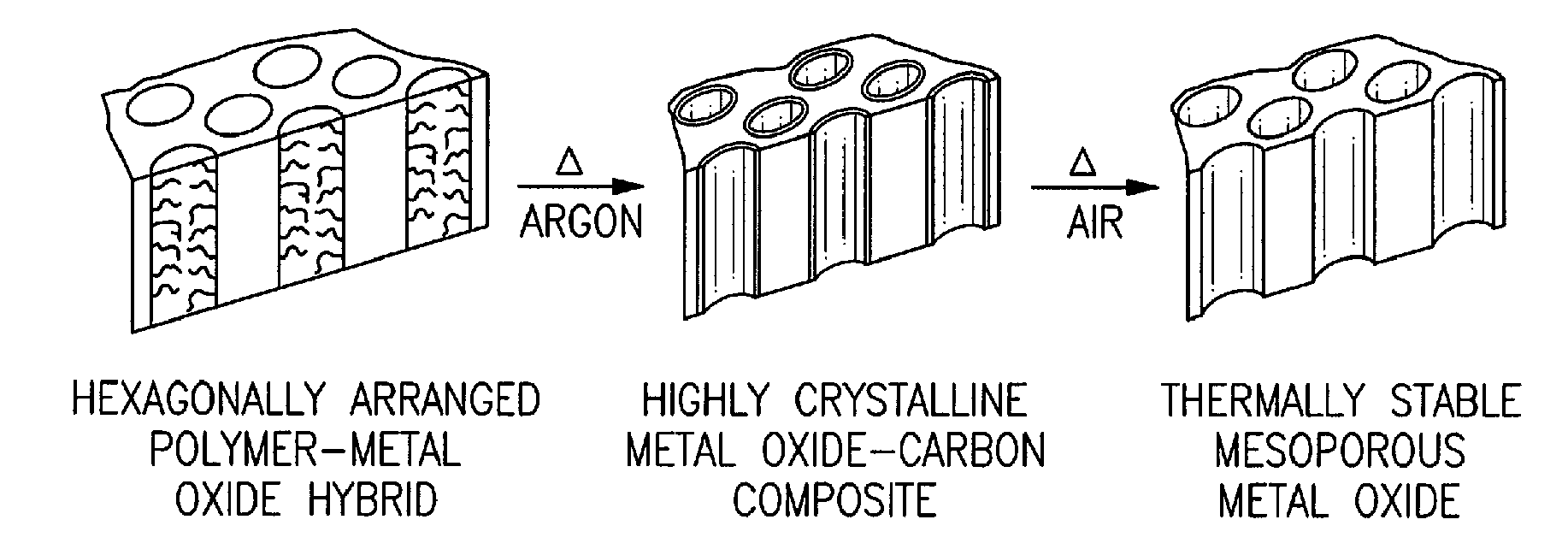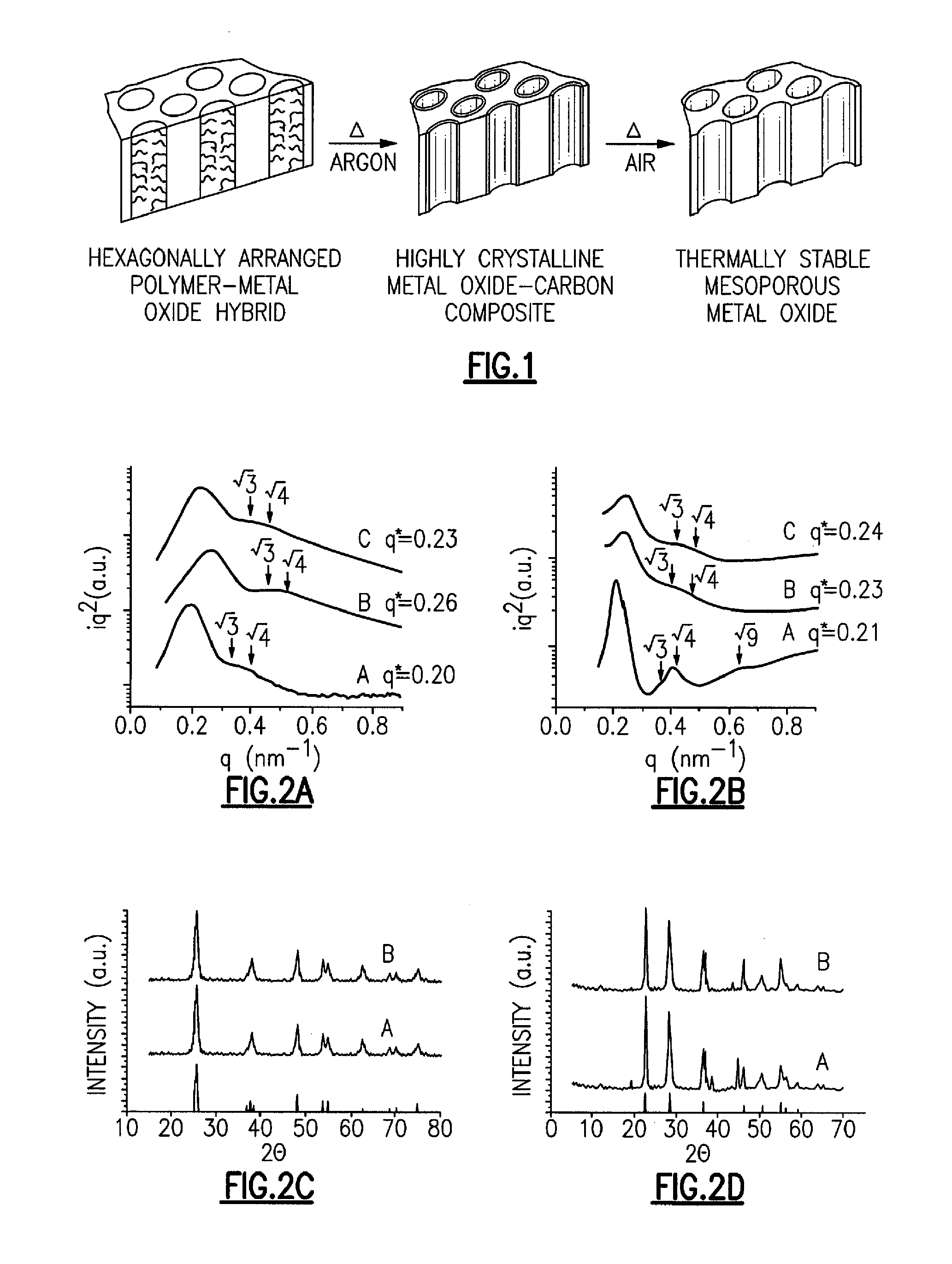Thermally stable crystalline mesoporous metal oxides with substantially uniform pores
a mesoporous metal oxide, substantially uniform technology, applied in the direction of niobium compounds, wood working apparatus, animal houses, etc., can solve the problems of reducing the efficiency of the device, the inability to heat treat mesoporous oxides to temperatures above 400° c. without inducing the collapse of the mesoporous structure, etc., to achieve high control and success
- Summary
- Abstract
- Description
- Claims
- Application Information
AI Technical Summary
Benefits of technology
Problems solved by technology
Method used
Image
Examples
Embodiment Construction
[0035]Highly crystalline metal oxide-carbon composites and methods of their synthesis are provided. Use of the foregoing composites as precursors to thermally stable mesoporous metal oxides are also provided. Highly crystalline metal oxide-carbon composites, having mesopores that are coated with a layer of amorphous carbon are provided. A method is provided for the highly controlled conversion of highly crystalline metal oxide-carbon composites to thermally stable mesoporous metal oxides, having highly crystalline mesopore walls, without causing the concomitant collapse of the mesostructure. A “one-pot” method is provided for the highly controlled and successful conversion of highly crystalline metal oxide-carbon composites to thermally stable mesoporous metal oxides, having highly crystalline mesopore walls, without causing the concomitant collapse of the mesostructure. An embodiment of the “one-pot” method that is provided uses block copolymers with an sp or sp2 hybridized carbon ...
PUM
| Property | Measurement | Unit |
|---|---|---|
| temperature | aaaaa | aaaaa |
| temperature | aaaaa | aaaaa |
| temperature | aaaaa | aaaaa |
Abstract
Description
Claims
Application Information
 Login to View More
Login to View More - R&D
- Intellectual Property
- Life Sciences
- Materials
- Tech Scout
- Unparalleled Data Quality
- Higher Quality Content
- 60% Fewer Hallucinations
Browse by: Latest US Patents, China's latest patents, Technical Efficacy Thesaurus, Application Domain, Technology Topic, Popular Technical Reports.
© 2025 PatSnap. All rights reserved.Legal|Privacy policy|Modern Slavery Act Transparency Statement|Sitemap|About US| Contact US: help@patsnap.com



